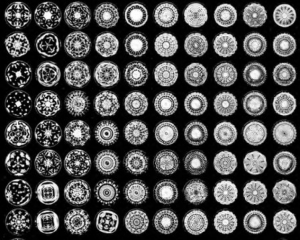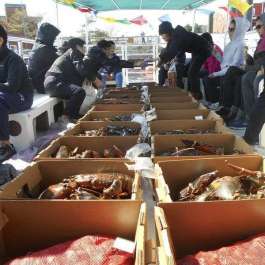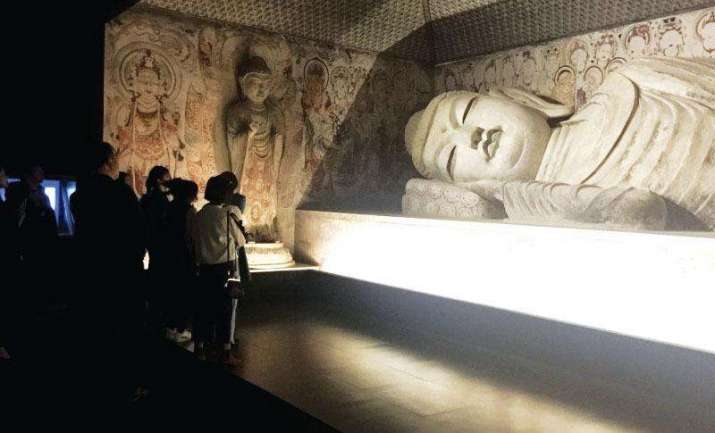
Shenzhen, a major city in the southern Chinese province of Guangdong, is now the stage for one of the largest Dunhuang exhibitions to date. Making use of reproductions and utilizing cutting-edge technology, the exhibition, titled Mysterious Dunhuang, the event allows visitors to walk among life-size reconstructions of the ancient Mogao Caves.
The famed grottoes, an ancient network of 735 caves and Buddhist temples hewn into the side of a sandstone cliff in the Gobi Desert, are a repository of some of the finest and oldest works of Buddhist art in China. China’s first UNESCO World Heritage Site (since 1987), the Mogao Caves, also known as the Thousand Buddha Grottoes, include some 492 Buddhist temples, decorated with more than 45,000 square meters of exquisite frescoes and some 2,000 sculptures, dating from the 4th to the 14th centuries. A period, during which the area served as a strategic oasis and major crossroads on the ancient Silk Road. The caves would have been visited by countless travelers, merchants, and Buddhist pilgrims, and are now more popular than ever.
This popularity, however, has come at a price—the explosion in the number of visitors to the historic site, which reaches up to 25,000 people daily, is threatening to irreversibly damage these ancient works of Buddhist art that have survived the vicissitudes of human activity and the elements for centuries. In an effort to protect the original artwork, artists have been copying the original murals since the 1950s. So far, they have managed to replicate 12 of the caves to the minutest details, even including colors that have faded due to oxidation. As a result, most of the original murals are kept safely in storage, inaccessible to visitors of the cave complex.
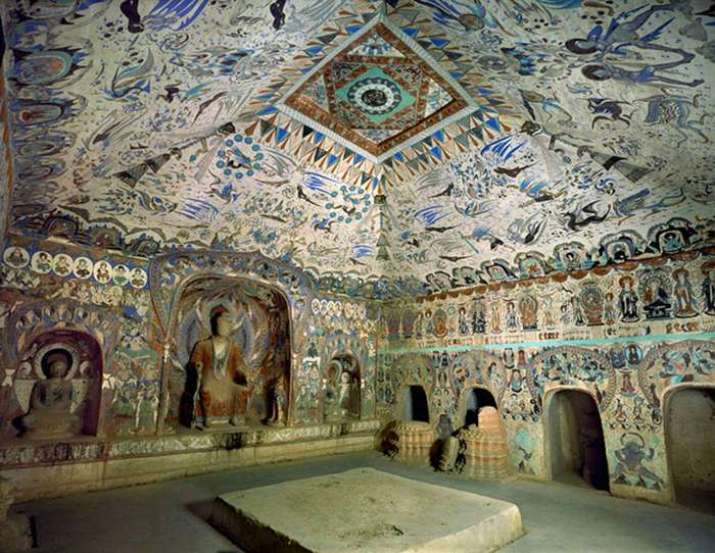
While access to the original site is heavily controlled, the exhibition in Shenzhen allows visitors to stroll through life-sized replicas of seven of the heritage site’s caves, and the many reproductions of sculptures and murals they house, at their leisure. The ceiling of the exhibition space—roughly the size of 10 basketball courts—has been covered with an arched screen on which films showcasing the murals are projected. Animated images of apsaras (celestial singers and dancers that occupy the heavens in Buddhist and Hindu mythology) and other informative videos introduce the Mogao murals to audiences.
“It’s very rare for us to hold an exhibition of this scale out of the 100 or more shows we’ve held around the world,” commented Song Shuxia, deputy director of the visitor reception department at Dunhuang Research Academy, which is responsible for the conservation, management, and research of the Mogao Caves. (China Daily)
Yang Juze, founder of Blooming Investment, a company focused art and culture, and the organizer of the exhibition, stated that he hoped the high-tech features would appeal to a younger audience. “We all know that the Mogao Grottoes are gorgeous. But how we attract ordinary people with little knowledge of art or Buddhism has been the big question. I hope I have presented the show in a way that will allow more people to understand this culture.” (China Daily)
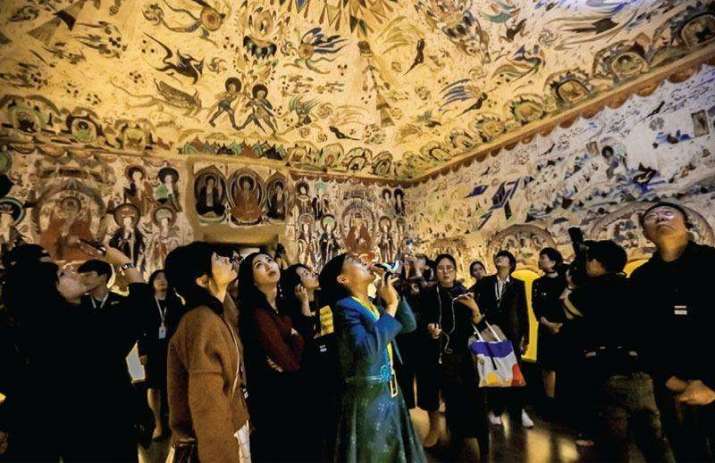
Some of the high-tech features include animations of Buddhist stories depicted in the murals, a set of emojis inspired by the animated apsaras to be used on social media, and clothing and accessories inspired by the murals that people can use for their online avatars.
According to Yang, his “modern” approach led to some debate with Dunhuang Research Academy. “The caves are a great treasure in our culture. But we should change our traditional methods of communication, especially toward the young. I think using new technology or even featuring elements from the caves in the future games might be a better way to introduce culture to younger people,” Yang observed. “Speaking of Shenzhen, people usually associate the city with technology, but never with culture. I want to be a pioneer to satisfy people’s spiritual needs.”
The Mysterious Dunhuang exhibition will run until 30 March. English- and Japanese-speaking guides from Dunhuang Research Academy are onsite to show visitors around. For those unable to make the journey to Shenzhen, the virtual beauty of the caves can also be admired online via the website Digital Dunhuang.*
* English Version of Digital Dunhuang Offers Virtual Tour of Mogao Caves (Buddhistdoor Global)
See more
Unlocking mysteries of Dunhuang (ChinaDaily)


